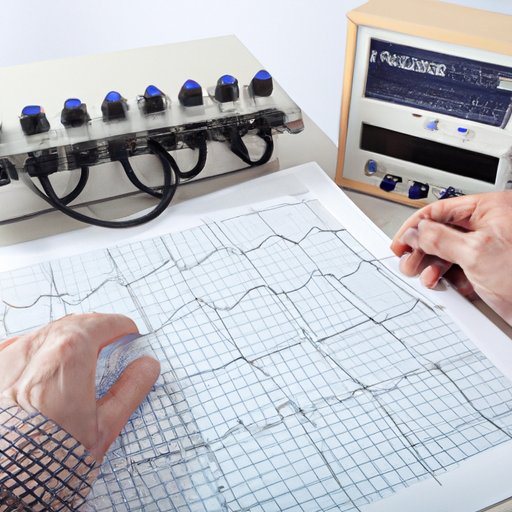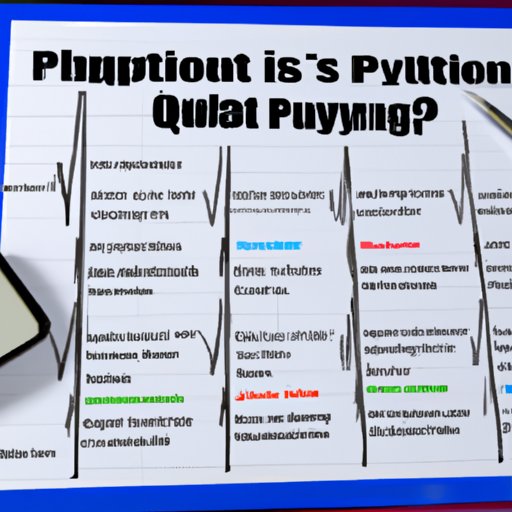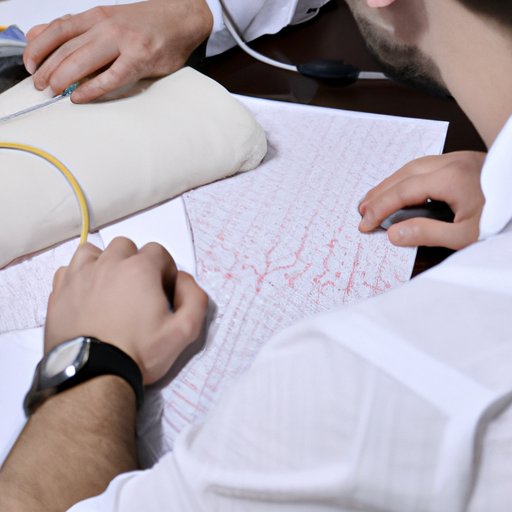Introduction
A polygraph test, also known as a lie detector test, is a type of psychological evaluation used to detect deception. It involves recording and measuring a person’s physiological responses, such as their heart rate, respiration, and skin conductance, while they answer a series of questions. The purpose of this article is to explore how a polygraph test works, including an explanation of the science behind the test, the different components, types of questions used, accuracy levels, role of the examiner, legal implications, and advantages and disadvantages.

Explaining the Science Behind Polygraph Testing
Polygraph tests are based on the idea that when a person lies, their physiological responses will change. This is due to the body’s natural fight-or-flight response, which causes the body to produce certain hormones and chemicals that can be detected through physiological measurements. During a polygraph test, these changes in physiological responses are recorded and analyzed to determine whether or not the person is telling the truth.

Examining the Different Components of a Polygraph Test
A polygraph test consists of two main components: the instrumentation used to measure the physiological responses, and the questions asked during the test. The instrumentation includes sensors that measure the person’s heart rate, respiration, and skin conductance. The questions asked during the test are designed to elicit a response from the person being tested, which can then be measured and interpreted by the examiner.

Describing the Different Types of Questions Used During a Polygraph Test
During a polygraph test, the examiner typically begins by asking the person some general background questions. These are known as “irrelevant questions” and are used to establish a baseline for the person’s physiological responses. The examiner then moves on to what are known as “relevant questions,” which are designed to elicit a response from the person being tested. Finally, the examiner may ask a few “control questions,” which are designed to check the accuracy of the test results.
Analyzing the Accuracy of Polygraph Testing
The accuracy of a polygraph test depends on a variety of factors, including the skill of the examiner, the type of questions asked, the environment in which the test is conducted, and the emotional state of the person being tested. Several research studies have been conducted to examine the accuracy of polygraph testing, with most studies concluding that it is generally accurate at detecting deception.

Investigating the Role of the Examiner During a Polygraph Test
The examiner plays an important role in administering a polygraph test. Before the test begins, the examiner typically conducts a pre-test interview to gather information about the person being tested. During the test, the examiner watches for any changes in physiological responses and interprets the results. After the test is complete, the examiner must make a final determination as to whether or not the person being tested was telling the truth.
Understanding the Legal Implications of Polygraph Testing
In the United States, polygraph tests are not generally admissible as evidence in court. However, some states allow the results of a polygraph test to be used in certain criminal cases. Additionally, employers may use polygraph tests to screen job applicants, but employees have certain rights when it comes to taking a polygraph test, such as the right to refuse to take the test.
Assessing the Advantages and Disadvantages of Polygraph Testing
Polygraph testing can be beneficial in certain situations, but it also has its drawbacks. On the plus side, polygraph tests can provide valuable insight into a person’s honesty and can be used to help identify potential suspects in criminal cases. On the other hand, the results of a polygraph test can be unreliable, and the process can be intrusive and stressful for the person being tested.
Conclusion
Polygraph tests can be a useful tool for determining whether or not someone is being truthful. However, it is important to understand the science behind the test, the different components, types of questions used, accuracy levels, role of the examiner, legal implications, and advantages and disadvantages before administering a polygraph test. With a better understanding of how a polygraph test works, it can be a powerful tool for obtaining reliable information.
(Note: Is this article not meeting your expectations? Do you have knowledge or insights to share? Unlock new opportunities and expand your reach by joining our authors team. Click Registration to join us and share your expertise with our readers.)
